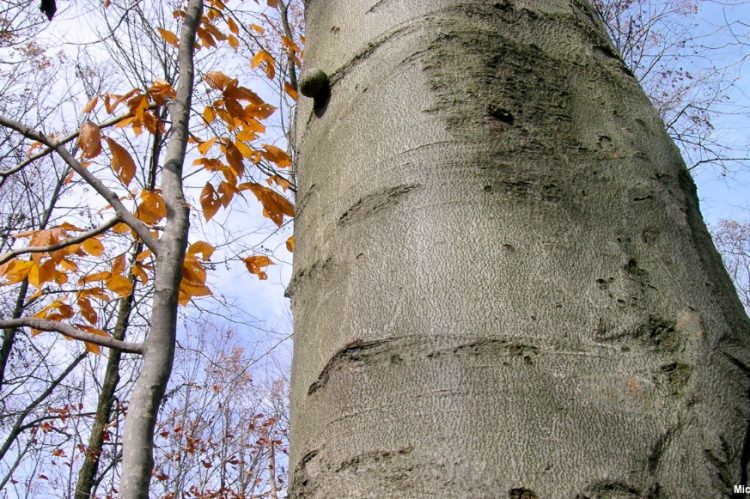A text from Daniel Kneeshaw from the “Sous-groupe Forêt du Comité consultatif en environnement de Morin-Heights”.
One of the easiest trees to identify in the winter, the american beech, is recognised by its smooth bark, its propensity to retain leaves, its alternate branching habit and its long pointy buds (see images). This extremely shade-tolerant tree is also one of the few hardwoods that the over abundant population of white-tail deer do not eat but through it large seed provides food to many animals and birds. However, over the last decade or two an invasive species complex – the beech bark disease, has moved into the forests of Morin Heights and is threatening this species. The beech bark disease is a canker fungus tranported by a beech scale insect which is itself often moved from tree to tree by wind, animals or people movind wood. What can you do? Don’t move beech firewood as it can be infected, maintain resistant trees in infested areas as they may be a key to the future success of this species. From left to right : A healthy beech, a tree attacked by the scale insect, a tree showing signs of development of the canker fungus and a tree in which the disease if well developed with large cankers and not long to live.


